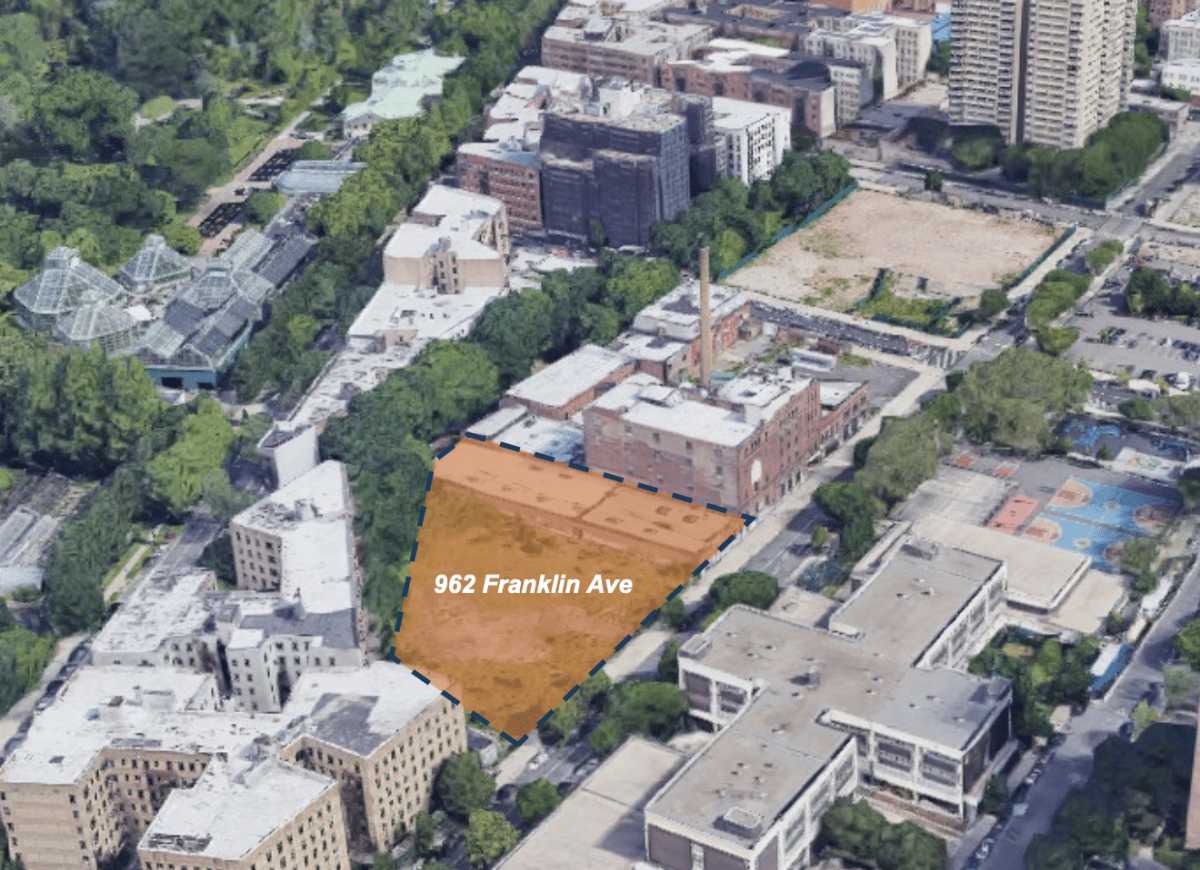After years of negotiations, Continuum’s planned residential tower on the former Spice Factory site near the Brooklyn Botanic Garden is set to move forward, with a new agreement reached today between the developer, local council member, and garden leadership on the building’s height and affordability.
The 14-story tower at 962-972 Franklin Avenue will now feature a reduced 10-degree slope, down from the initially proposed 15 degrees, to protect the garden’s vulnerable plants — a change the garden staff requested during the rezoning application process.
In return, Council Member Crystal Hudson and BBG will support developer Continuum Company increasing the limits of the affordable units from targeting families earning an average of 60% of Area Median Income, or $83,880 for a family of three, to targeting families earning an average of 70 and 115 of AMI, or $97,860 and around $170,000 for a family of three.


Rather than setting aside 25% of the 355 total units as affordable housing, as originally pitched, the developer will now set aside 30%, or 106 units, at the higher income levels, Hudson said in the statement.
The updated plans come just over a month after Continuum said it planned to shelve the rezoning and build market rate condos if the original proposal wasn’t accepted, and the day before a City Council Zoning and Land Use Committee vote. An attorney for Continuum told Brownstoner the development team “believes the proposal is workable” and they will be saying more about it this afternoon at a rally outside Council Member Crystal Hudson’s office.
In a press release, Brooklyn Botanic Garden President Adrian Benepe said that after years of “discussion, debate, and vigorous public advocacy, the threat of permanent loss of sunlight for our living museum of plants is over.”
“We are grateful to our elected officials for their steadfast support and diligent work to craft a plan that ensures the sunlight that plants need to survive, protects the Garden from permanent damage, and enables affordable workforce housing,” he said.

Crystal Hudson, the council member who represents the district and who has said she wouldn’t support a development if it harms the Botanic Garden, said in a statement that the updated proposal “meets our joint priorities of protecting the cultural institutions that drive our city’s economy and building affordable workforce housing.”
“We fought for sunlight, and we won,” she said.
She said the project will create “1,000 good-paying union construction jobs and [establish] the first union-financed, built, and operated residential development in the history of New York City.”
Continuum has also committed to funding a number of upgrades at Jackie Robinson Playground, she said.

Continuum’s May 2024 rezoning application was to convert the property from an R6A zoning district to R8A and C2-4, allowing for a 14-story, 475-unit development rather than the seven-story build that would be allowed as of right.
In September, Continuum took people by surprise when it said it was throwing in the towel on the controversial rezoning application just after the City Planning Commission approved a tweaked version of the proposal, designed to protect the nearby Brooklyn Botanic Garden from shadows that would damage its plants. At the time, the developer said it would likely create market-rate condos under the existing zoning.
“A well-meaning project that cannot be financed will not be built,” Rosenberg told Brownstoner in an emailed statement at the time. He said the changes would “significantly impact our ability to deliver on the promises we’ve made to the community – including the creation of much-needed affordable housing units and hundreds of good-paying union jobs. Today’s vote makes that financially unworkable.”
According to BBG and Hudson’s press releases, the negotiations to get the plans back on track, at a time when the city is under pressure to build more housing, included bringing together elected officials, the garden staff, the development team, local unions, and city planning officials.
At a meeting planned for tomorrow, the City Council will “refer the application back to CPC to approve the agreed upon modifications,” a rep for Hudson told Brownstoner. Then, after the City Council’s Committee on Land Use votes on the tweaked plan, on Nov. 21, the full City Council will vote. Then, the proposal will go to the mayor’s desk.
This story first appeared on Brooklyn Paper’s sister site Brownstoner

























